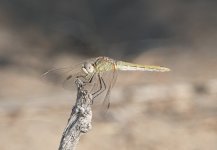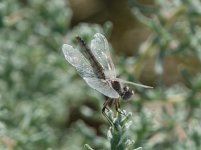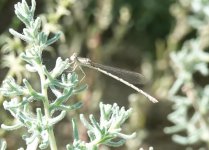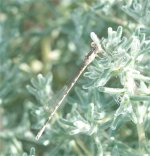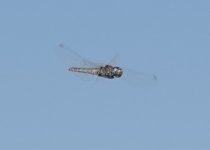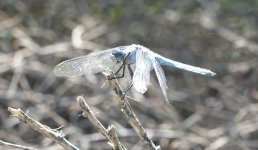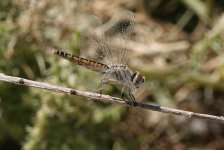1) is female
Sympetrum fonscolombii.
The confusion species for
S.arenicolor is
S.sinaiticum with a continuous black line along the sides of the first few segments of the abdomen in both sexes. Also
S.arenicolor has clear wings whereas in your photo the orangey-yellow hindwing patch of
fonscolombii can be seen. Female Red-veined Darters have yellow costas, antenodal crossveins (Ax) and node which show well in your insect's right wing. The yellow pterostigmas strongly bordered in black (a
fonscolombii feature) can be seen in the left forewing - when viewed from below (as 3 Pt are in your pic) most
Sympetrum species show pale pterostigmas.
So, as you can probably tell!, I don't think your insect is
S.arenicolor - there are some nice pictures of
S.arenicolor in Libellula supplement 9 (Atlas of the Odonata of the Mediterranean and North Africa).
However it could be
Sympetrum tibiale about which I only know Dumont's 2018 paper in which there is the sentence "The problem of studying
S.tibiale is perhaps best characterized by the fact that, to date, we still do not know of a single photograph of a living individual."

3 & 4) As far as I know the three
Sympecma species are usually easily separated on the thorax markings.
I personally wouldn't take what is written on the geography / status in the West & Central Asia Atlas as the gospel truth. It is their best estimate of what the situation is and there will be large gaps in the knowledge.
6) As far as I know and from all the images I've seen, the frons of
Orthetrum coerulescens anceps is brown as in the one we have here in the UK.




